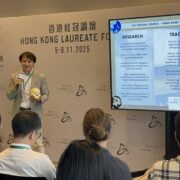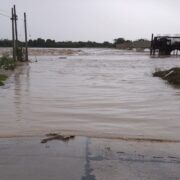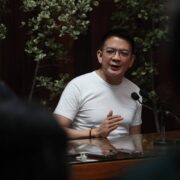Third quarter letdown

Many expected the economy to soften in the third quarter (Q3), but hardly anyone thought our economy’s growth would slow down as sharply as it did, to 4 percent from 5.5 percent in the first half. The nine-month cumulative growth of 5 percent already falls well below the government’s 5.5-6.5 percent target for the year, and global bank ING projects it to further slow down to 4.7 percent. While that’s a respectable growth rate that still exceeds those of our Asean peers other than Vietnam, it is well short of the International Monetary Fund’s 5.2 percent 2025 growth forecast for emerging and developing Asia.
Unlike us, our Asean peers are actually seeing their economies pick up speed. Vietnam leads with a reported 8.2 percent Q3 growth, while Indonesia, Malaysia, Singapore, and Thailand similarly report or project faster growth in Q3, and all expect to improve on their 2024 growth. With us missing out so far on zero-tariff concessions, given by United States President Donald Trump at the last Asean meeting in Kuala Lumpur, to Malaysia, Thailand, and Cambodia, our earlier expected advantage over our neighbors has disappeared.
Where did our slowdown come from? It would seem logical to point to two major forces as having dragged the Philippine economy this year, one external and one internal: Trump’s tariff hikes early this year and our own “floodgate” corruption scandal that erupted in July, which drastically curtailed infrastructure spending. As for the first, we were hit—like most other countries worldwide—by Trump’s large new import tariffs. Apart from more restricted access to the US market itself, it has led to a wide expectation of further slowdown in global trade that began in Trump’s first presidency due to disrupted global value chains, which we are also part of and benefit from.
But has that really slowed us down? Surprisingly, the numbers suggest otherwise. A closer look at our Q3 GDP growth numbers tells a different story. Rather than slow down, our overall export growth has actually been speeding up since 2023, and even in the aftermath of Trump’s tariffs. Our merchandise or goods exports grew annually by 1.4, 3.3, and 6.3 percent in 2023, 2024 and 2025 (so far), respectively. Exports data in September show the US actually topping our export buyers, while electronics, our top export product, grew by a hefty 27.9 percent, a sizable chunk of which goes to the US. Even in the face of new tariffs, September electronics exports to the US reportedly grew by 2.3 percent from the previous year. While the US tariffs will inevitably take a toll on our US-bound exports, a downturn has so far not been seen.
So did Trump’s tariffs cause our Q3 slowdown? It doesn’t seem so. It’s our own self-inflicted roadblocks that must be the real culprit behind the Q3 letdown. True enough, the GDP numbers tell the story. The demand or spending side of the data shows that overall construction spending fell by half a percent, pulled down by a deep 26.2 percent dive in government construction. Even the 14.4 percent growth in corporate construction spending and the 13.3 percent hike in household construction spending could not prevent an overall construction decline. Worse, even consumption spending by the government successively slowed down to 5.8 percent from 18.7 percent and 8.7 percent in Q1 and Q2, respectively, when it actually helped drive overall growth. I wrote last May on how our economy’s growth was being driven by government construction (infrastructure) and consumption spending (see “Government-led growth,” 5/13/25). Take those away or drastically reduce them as what happened in Q3, and the economy grinds to a halt or a slow crawl.
Something similar happened in 2010-2011, under then newly elected President Benigno “Noynoy” Aquino III. When his Public Works Secretary Rogelio “Babes” Singson halted questionable infrastructure projects, it curtailed growth in government construction spending to only 4.1 percent in 2010, from 15.9 percent in 2009, and on to a drastic -31.8 percent drop in 2011. The unwanted effect was to drag the whole economy’s growth from 7.3 percent in 2010 to a mere 3.9 percent in 2011. The Aquino administration went into crisis mode and embarked on the Disbursement Acceleration Program to divert freed-up infrastructure funds into productive expenditures to reignite growth in pursuit of inclusive development.
The ongoing scandal has seen budgets move in the reverse direction: from priority public investments and programs to spurious public works projects that have fabulously enriched politicians, officials, and contractors. Harnessing Singson again to help fix things makes eminent sense. But we all must put pressure on the government to convincingly bring all offenders to justice. Only then can government construction spending not only speed up the economy’s growth, but also yield the greatest good for the greatest number.
—————-
cielito.habito@gmail.com


















5 problems with Trump’s Gaza peace plan